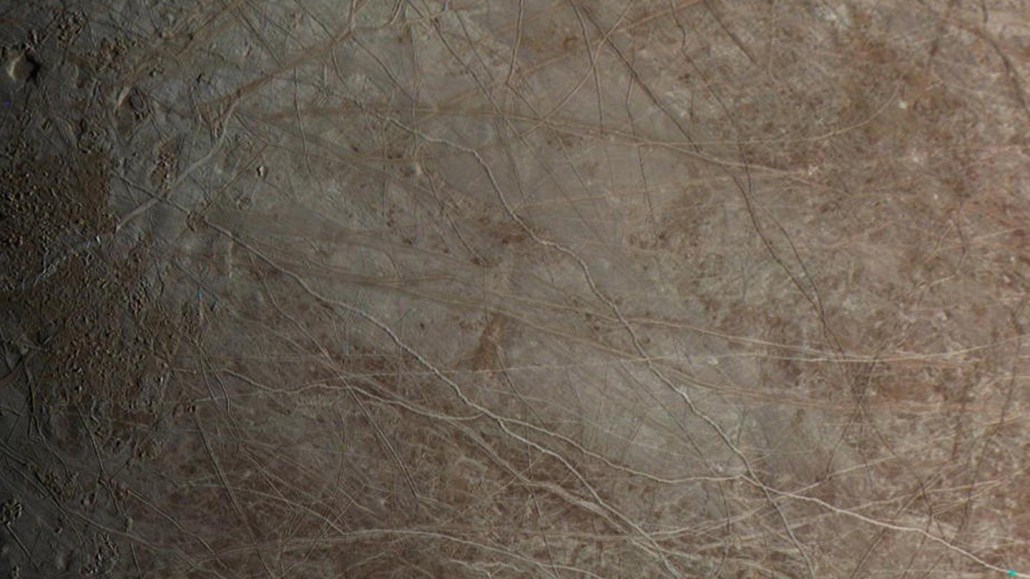
Cracks and ridges crisscross the icy shell of Jupiter’s moon Europa in this closeup image captured September 29 by NASA’s Juno spacecraft.
Image data: JPL-Caltech/NASA, SWRI, MSSS; Image processing: Paul Schenk (CC-BY 3.0)

Cracks and ridges crisscross the icy shell of Jupiter’s moon Europa in this closeup image captured September 29 by NASA’s Juno spacecraft.
Image data: JPL-Caltech/NASA, SWRI, MSSS; Image processing: Paul Schenk (CC-BY 3.0)